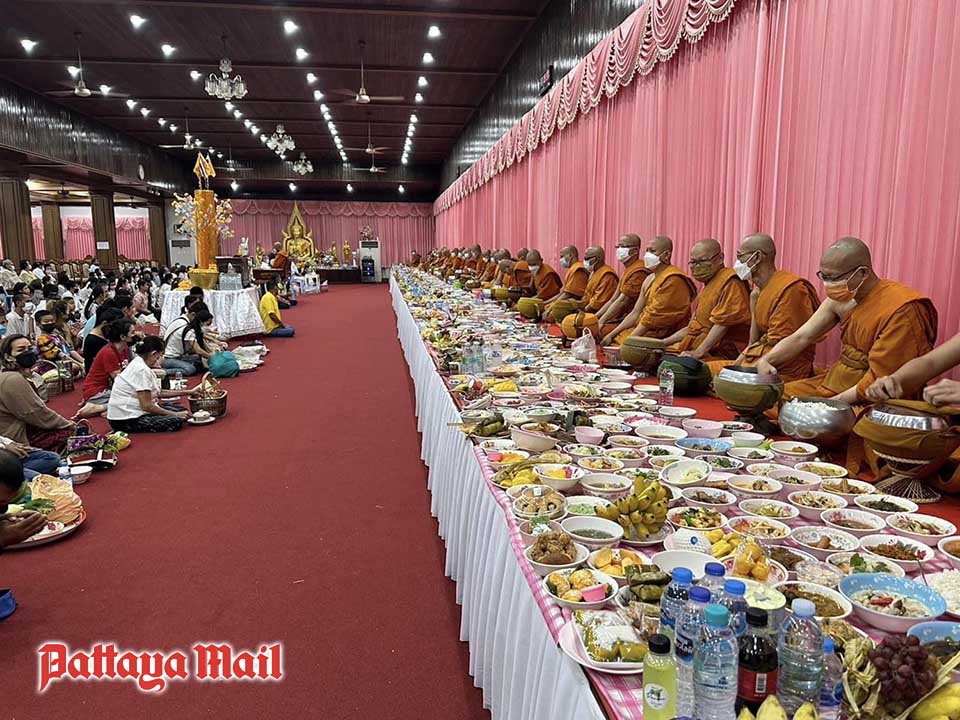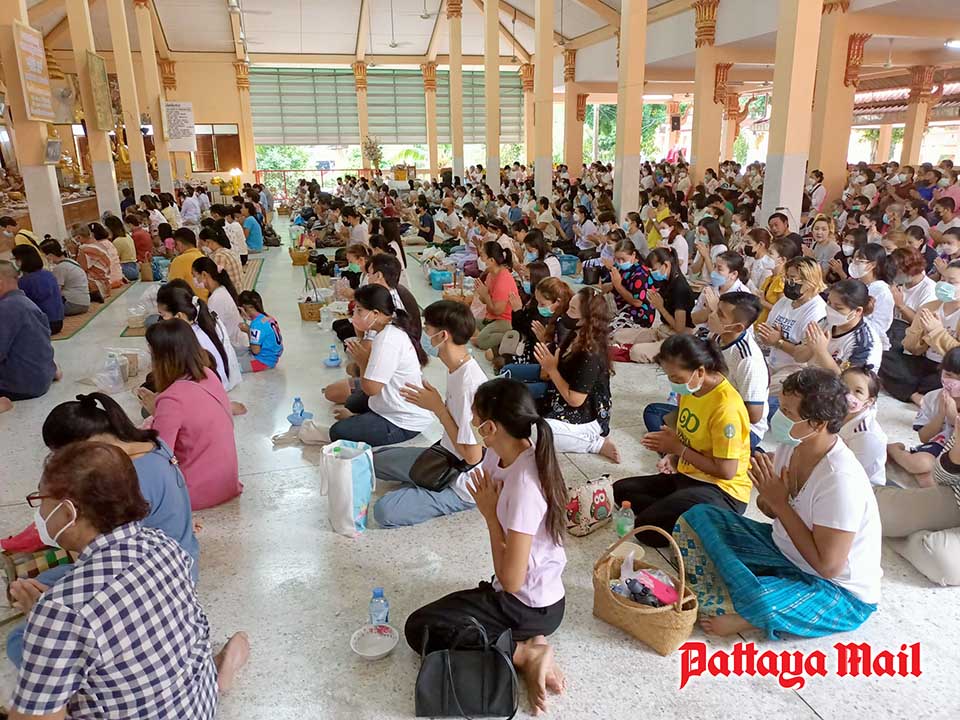
Pattaya marked the end of Buddhist Lent and welcomed monks back into the earthly abode after three months of abstinence and residing in temples known as “Khao Pansa” (rains retreat).
Phra Khru Rachasansophon, abbot of Wat Chaimongkol temple and deputy dean of monks for Chonburi Province, led the Oct. 10 “Auk Phansa” and “Tak Bat Devo” ceremonies and parade at the South Pattaya temple.
As is the custom, there were three parades, one of monks and two others of “angels” and “devils”.
The “angels” scattered popped rice and flowers to people, who were waiting to give alms offerings with the belief that deities and angels were blessing them for prosperity.
Next were dancing women and tom-tom drummers from Pattaya School No. 8. Little devils took donations from those attending, which is considered making merit for themselves.
Believers had prepared food, sweets, fruit and incense to present to the monks, who made up the third parade, sprinkling holy water on those lining the procession route.
Tak Bat Devo, derived from the Sanskrit word “Devorohana,” is celebrated at the same time as Auk Phansa, the end of Buddhist Lent. Monks who have been in their “rains retreat” for three months emerge in a procession of golden gowns depicting the path Buddha took down a “celestial stairway” made of silver, gold and crystal.

In addition to cash, the most common alms offering for the festival is “Khao Tom Luk Yoni”, or sticky rice with coconut leaves. Legend holds that the coconut leaves, which are heavier, allowed followers who couldn’t get close to Buddha upon his return to throw their offerings accurately into his bowl.
But coconut leaves are expensive and harder to find, so most choose to make “Khao Tom Mud” a sweet treat of sticky rice, banana, black bean, and sugar wrapped in banana leaves instead. Many claim the cheaper recipe also is tastier.
The same scenes played out at 41 area temples, including Wat Nongyai Temple.
According to ancient tales, Buddha returned to his home in Kapilavastu seven years after achieving Nirvana and becoming the “Enlightened One.” At the start of Lent that year, in remembrance of his mother, Buddha ascended to the heavens to deliver a sermon to his mother. There he resided for three months.
On the first day of the waxing moon of the eleventh lunar month Buddha returned to throngs of angels, disciples and followers who received him with offerings of food and other sacred items. Followers repeated his return in following years during a ceremony that has come to represent the Buddhist belief in reincarnation as much as its historical significance.
 |
 |
 |





